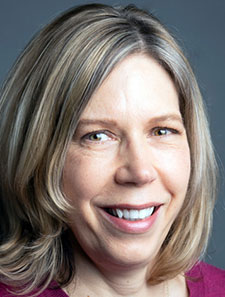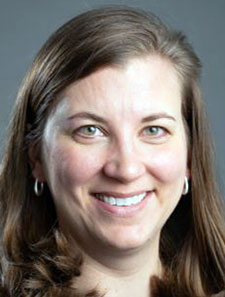How We Did It is a new column that aims to highlight how individual hospitalist programs have successfully implemented innovations in medical programs, educational programs, wellness initiatives, or operational improvements. The goal is to provide practical, actionable insights to hospitalists nationwide, offering a roadmap for similar success.
Problem
In 2021, the University of Wisconsin division of hospital medicine was at a tipping point. The constant demand for expansion of services, uncertainties of the pandemic, and long hours led to physician and advanced practice practitioner (APP) burnout. Additional contributing factors included the traditional model of rounding and admitting on seven-day, 12-hour services, lack of control over one’s daily workflow, the unpredictability of shift duration, the role switching between rounding and admitting on the same day, and work bleeding into home life. In the following paragraphs, we introduce you to our Service Structure Task Force (SSTF), a nimble committee that rapidly led to service-structure change and addressed many of these problems.
Solution
Building the SSTF
In 2021, a senior hospitalist in our division (and one of the authors) recognized the discontent within the group and, with endorsements from division and department leaders, created the Service Structure Task Force. The goal of this task force was to transparently and rapidly address service-structure-related problems in an FTE-neutral manner.
As a key part of this, she carefully chose SSTF members. Representation from experienced division members was essential. However, excluding official division leaders allowed task force members to speak more freely. Next, a few recently hired hospitalists were asked to join to provide perspectives from prior jobs or represent the wishes of those straight out of residency. Any service-structure change would affect APPs, and the lead APP was included. We deliberately included a nocturnist since any service-structure change would impact the nocturnists. Ultimately, the eight chosen task force members were highly engaged in the discussion and invested in the outcome.
Accomplishing change thoughtfully and rapidly
First and foremost, task force members committed time and effort to the work. The SSTF met weekly for several months, keeping the conversation at the forefront of our minds and driving the agenda forward rapidly. An essential part of our work was obtaining data thoughtfully. The SSTF created a survey that intentionally used creative questions and free-text answers (rather than a Likert scale) to identify significant problems with our existing schedule.
The SSTF valued the opinions and ideas shared in the survey. We listened carefully and openly to division members and each other. Considering that, we analyzed the current service structure, incorporated survey data, and proposed a new model that used the same total full-time equivalents (FTEs) with distinct rounder and admitter roles and the option of shorter rounding shifts.
The SSTF was transparent with our work and proposed changes. We updated our division monthly with survey results and proposed service-structure changes. We openly explained the anticipated downsides of changes. For example, lower FTE-weighted shifts meant more days worked each month. We put the proposed service-structure changes to a division-wide vote, and the majority favored changing to the admitter rounder model. We implemented that change six months after the committee first met. The process and timeline are summarized in Figure 1.

Outcomes and impact
We analyzed the impact on readmission rates and lengths of stay (LOS). We retrospectively compared readmission rates and LOS during the 12 months preceding the change (April 2021 to March 2022) to the 12 months after implementation (April 2022 to March 2023). We compared readmission rates and LOS for our seven hospitalist services and all hospitalized patients at University Hospital (UH), where this change was implemented. Patients primarily managed on hospitalist services account for approximately one-fifth of all hospitalized patients at UH. We found no statistical difference in readmission rates or LOS after the change.
What about clinician satisfaction? We surveyed hospitalists before and after this change to assess its impact on job satisfaction. Hospitalist physicians (n=28) and APPs (n=8) were surveyed six months after implementing the admitter-rounder model. The survey showed that 78% of physicians and 100% of APPs who responded felt the new service structure was an improvement from the prior structure; 53.6% of physicians and 87.5% of APPs answered “yes” to the question, “Do you feel that there are fewer days you leave work exhausted since the start of the new service structure?”
Although not formally measured, the new service structure increased physician schedule flexibility, including the ability to flex FTE up and down more quickly when life demanded it. Our division has also had excellent physician retention since this change, with only a few physicians leaving since 2022, usually for fellowship or retirement.
Lessons learned
A purpose-driven group is essential. The SSTF members were carefully chosen and committed to the committee’s work. The committee met weekly, worked around each other’s schedules, and valued each person’s input. This allowed us to generate new ideas and implement changes quickly.
Change begets change. When we first changed the service structure, the new schedule resulted in a massive delay in publishing our schedule, which was difficult for our division members. As a result, a subgroup of the SSTF revised the scheduling process (how our schedule is made and published) with excellent results that persist today. Though this was not formally assessed, division members have said they are much happier with the timing of the schedule publication than before this change.
We learned to use data to drive decisions. Soon after its inception, the SSTF realized that we needed data about admission volumes and patterns to optimize the admitter shift design. One of our division members designed an in-house data collection tool that captures data on more than 90% of our admissions—what time they occur, the source, and who completes the admission. With this data, we can put admitters where and when needed.
Future directions
The SSTF proved so valuable that it is now a formal committee in our division and decides all service-structure changes. Since 2022, our division has added many physicians, APPs, and service lines at several sites, and the SSTF has changed to reflect that. The group now meets monthly and addresses myriad topics.
The SSTF considers all additional service-line requests and co-management agreements. We use our admissions data, survey data, and the SSTF members’ opinions to determine if expanding our roles is possible. When deemed possible, we carefully negotiate co-management terms within the SSTF. When not feasible, this rigorous process allows us to gracefully decline the requests of other divisions with data supporting our decision.
The ability of a hospital medicine group to change quickly and effectively relies on more than invested leadership. Our model demonstrates that engaged and committed team members are vital to implementing change. Additionally, obtaining data and remaining flexible in our solutions is essential. In other words, we learned that change begets change in the best way possible.

Dr. Ahrens

Dr. Murray-Bainer
Dr. Ahrens is a UW Health hospitalist and a clinical professor in the division of hospital medicine within the department of medicine at the University of Wisconsin School of Medicine and Public Health in Madison, Wis. She founded and served as the inaugural chair of the division of hospital medicine Service Structure Task Force. Dr. Murray-Bainer is a UW Health hospitalist, an assistant professor in the department of medicine, the University Hospital Clinical Services chief, and the interim vice chair of clinical affairs at the University of Wisconsin School of Medicine and Public Health in Madison, Wis.
Key Takeaways
- Have a mandate and a clear objective.
- Keep the group small yet representative of the larger group.
- Meet often. Standing meetings work best. If it isn’t on the calendar, it won’t happen.
- Accept new ideas. Set aside your ideas and truly listen to others. What works best for an individual might not work best for the group.
- Be transparent. No one likes or readily accepts change without explanation. Communicate clearly and often.